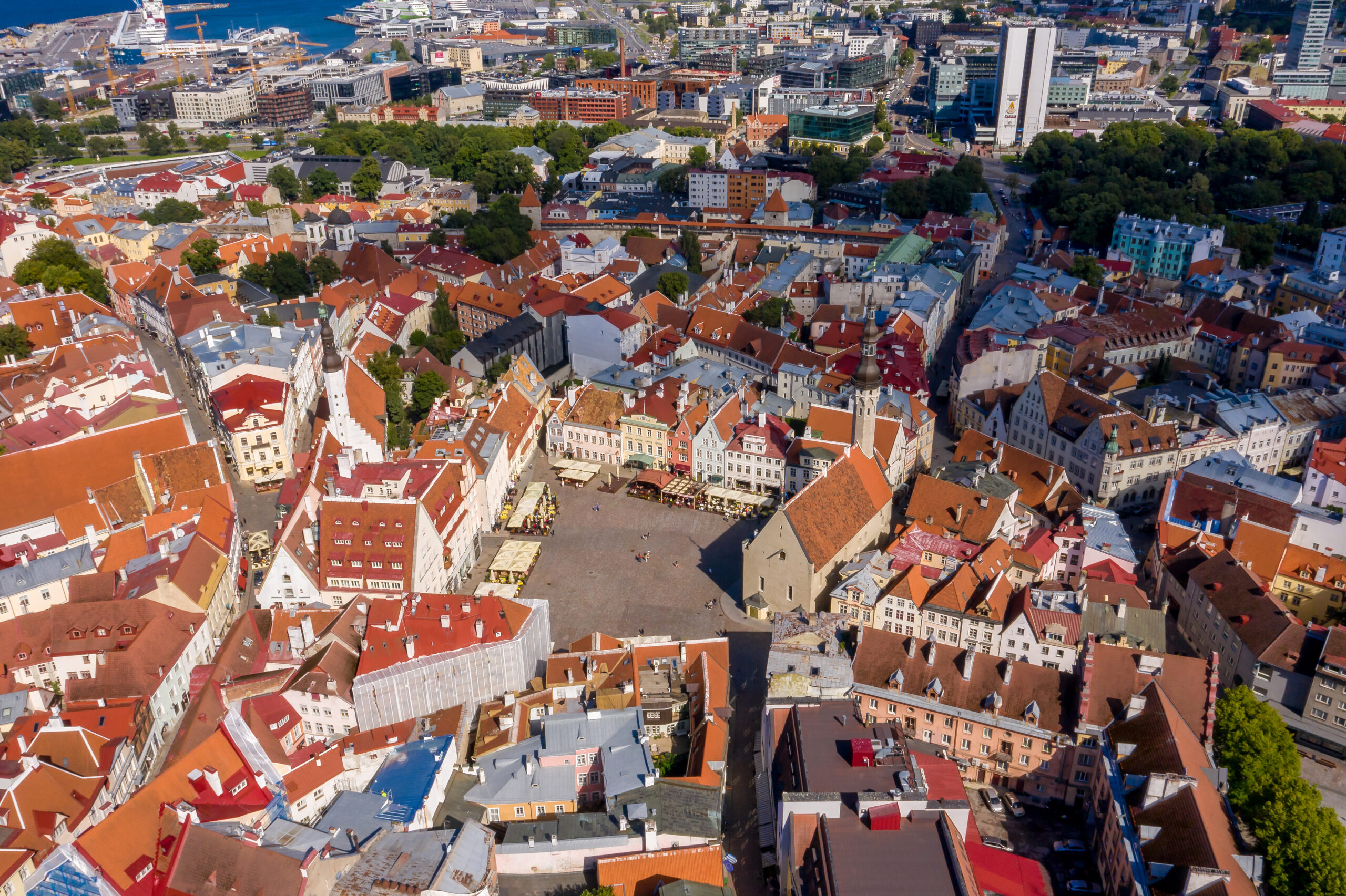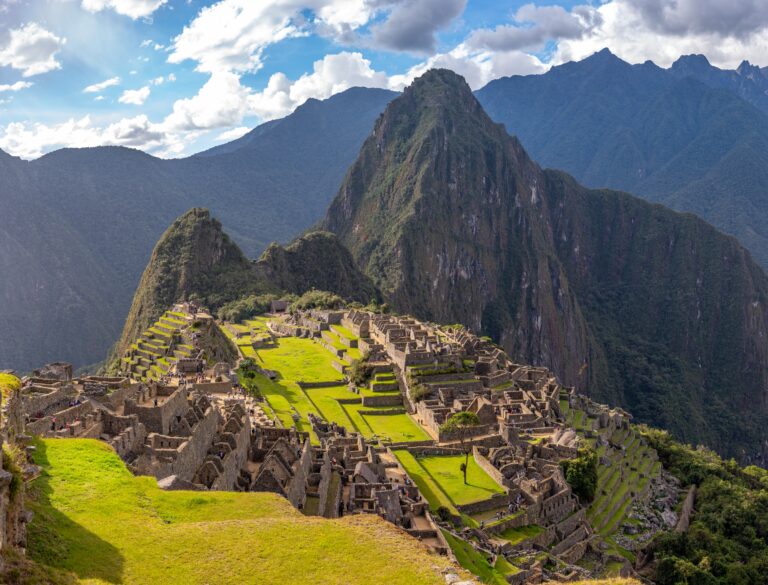
An aerial view of the medieval, beautiful walled city of Tallinn,Estonia
Europe is famed for its iconic cities like Paris, Rome, and London, but beyond these tourist hubs lie lesser-known destinations brimming with charm and culture. This article explores five hidden gems in Europe that offer travelers a unique experience away from the typical tourist trail. From the medieval streets of Tallinn, Estonia, to the picturesque coastal villages of the Amalfi Coast in Italy, we delve into the rich history, local cuisines, and breathtaking landscapes that make these destinations a must-visit.
1. Tallinn, Estonia
Tallinn, the capital of Estonia, is a medieval masterpiece waiting to be explored. The city’s Old Town, a UNESCO World Heritage Site, boasts cobblestone streets, Gothic spires, and ancient city walls that transport visitors back in time. The medieval architecture is perfectly preserved, and landmarks like Toompea Castle and Alexander Nevsky Cathedral offer insight into Tallinn’s rich past.
Visitors can wander through the bustling Town Hall Square, where lively markets sell local crafts and Estonian delicacies. Traditional dishes such as verivorst (blood sausage) and kama (a unique dessert made from roasted barley) are must-tries. Tallinn is also known for its vibrant art scene and quaint cafés where you can enjoy locally brewed craft beers. For panoramic views of the city, head to the Kohtuotsa viewing platform on Toompea Hill.
2. Garmisch-Partenkirchen, Germany
Nestled in the Bavarian Alps, Garmisch-Partenkirchen is a paradise for nature lovers and adventure seekers. This picturesque town is famous for its alpine scenery and serves as a gateway to Zugspitze, Germany’s highest peak. During winter, the town transforms into a skiing haven, while in summer, it offers countless hiking and mountain biking trails.
The Partnach Gorge, with its narrow limestone walls and rushing waterfalls, is a must-see natural wonder. Visitors can also explore historic Ludwigstraße, adorned with colorful frescoes and traditional Bavarian architecture. Food enthusiasts will enjoy hearty Bavarian fare like Weißwurst (white sausage) and freshly baked Brezn (pretzels) served with local beers.
3. Mostar, Bosnia and Herzegovina
Mostar is a city where East meets West, blending Ottoman and European influences. Its iconic Stari Most (Old Bridge), a UNESCO World Heritage Site, spans the emerald-green Neretva River and symbolizes reconciliation and peace. Watching local divers leap from the bridge into the river below is a thrilling sight and a tradition that dates back centuries.
The cobblestone streets of the Old Bazaar (Bazar Kujundžiluk) are lined with artisanal shops selling hand-crafted jewelry, carpets, and copperware. Visitors should try cevapi, a local grilled meat dish, and baklava, a sweet treat influenced by Ottoman cuisine. For a panoramic view of Mostar, climb the Koski Mehmed Pasha Mosque minaret.
4. Colmar, France
Colmar, located in the Alsace region, feels like stepping into a fairy tale. Its half-timbered houses, canals, and colorful facades create a storybook ambiance. Known as the “Little Venice” of France, Colmar’s charming canals are best explored by boat or on foot.
The town is famous for its wine production, particularly Riesling and Gewürztraminer. Visitors can follow the Alsace Wine Route to sample these exquisite wines in local vineyards. Cultural highlights include the Unterlinden Museum, home to the Isenheim Altarpiece, and the annual Christmas markets, which transform the town into a winter wonderland.
Food lovers should not miss Alsatian specialties like choucroute garnie (sauerkraut with sausages) and flammekueche (a thin-crust pizza-like dish). Colmar is also a great base for exploring nearby villages such as Eguisheim and Riquewihr.
5. Matera, Italy
Matera, located in southern Italy’s Basilicata region, is renowned for its ancient cave dwellings known as Sassi. These rock-cut homes date back thousands of years and offer a fascinating glimpse into the past. Once abandoned due to poverty, the Sassi have been revitalized and now house boutique hotels, art galleries, and traditional restaurants.
Visitors can explore the winding streets, visit cave churches adorned with frescoes, and learn about Matera’s history at the Museo Laboratorio della Civiltà Contadina. The city has gained international fame as a filming location for movies like The Passion of the Christ and the James Bond film No Time to Die.
Matera’s cuisine is deeply rooted in its agricultural heritage. Try local dishes like orecchiette pasta with turnip greens and peperoni cruschi (crispy dried peppers). A visit to the nearby Parco della Murgia Materana offers stunning views of the rugged landscape and ancient rock-hewn churches.
Travel Tips for Visiting Hidden Gems in Europe
- Best Time to Visit: Spring and autumn offer mild weather and fewer crowds, making them ideal times to explore these destinations.
- Getting Around: Renting a car can provide flexibility, especially in remote areas. Public transport is reliable in most regions but may be limited in smaller towns.
- Local Etiquette: Learn a few basic phrases in the local language to enhance your travel experience and show respect for local cultures.
- Packing Essentials: Comfortable walking shoes are a must for exploring cobblestone streets and natural landscapes.
- Safety: While these destinations are generally safe, always stay aware of your surroundings and secure your belongings.
Conclusion
Europe’s hidden gems offer travelers an opportunity to experience the continent’s rich history, diverse cultures, and stunning landscapes away from the bustling tourist hotspots. Whether you’re wandering through the medieval streets of Tallinn, hiking in the Bavarian Alps, or exploring ancient cave dwellings in Matera, these destinations promise unforgettable adventures and authentic cultural experiences. So pack your bags and set out to discover Europe’s best-kept secrets!





